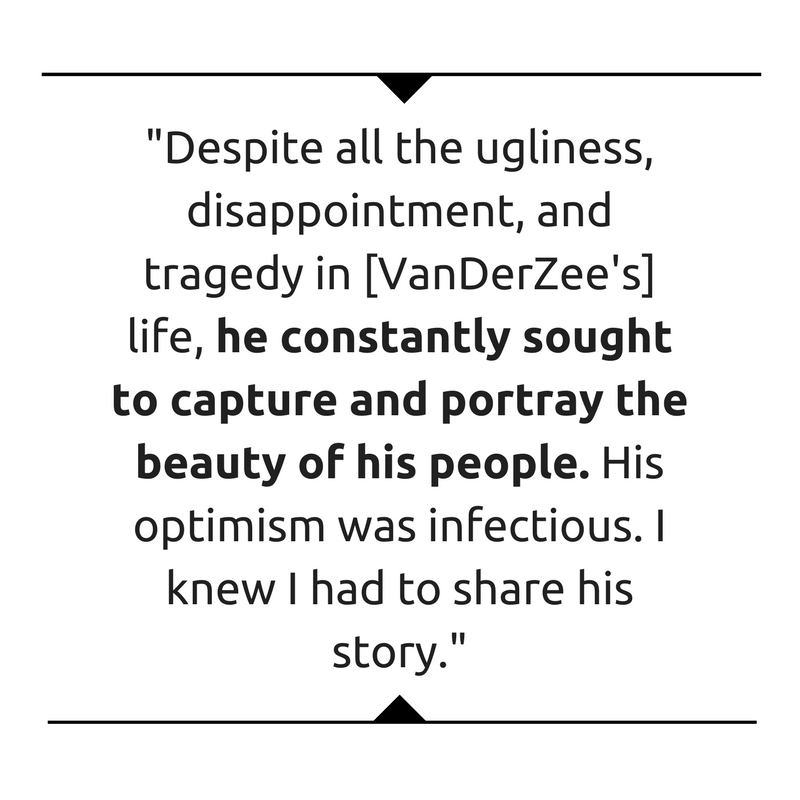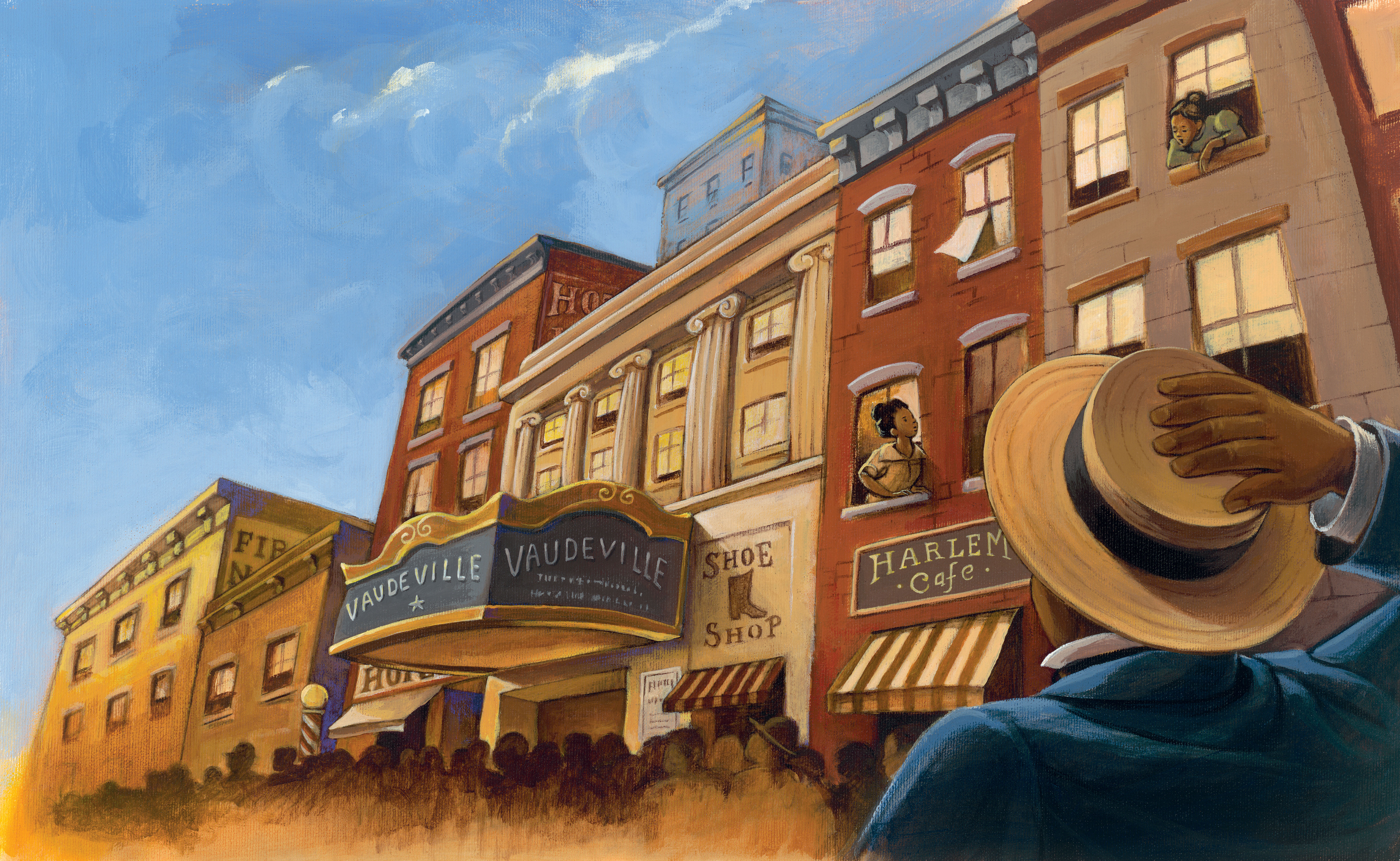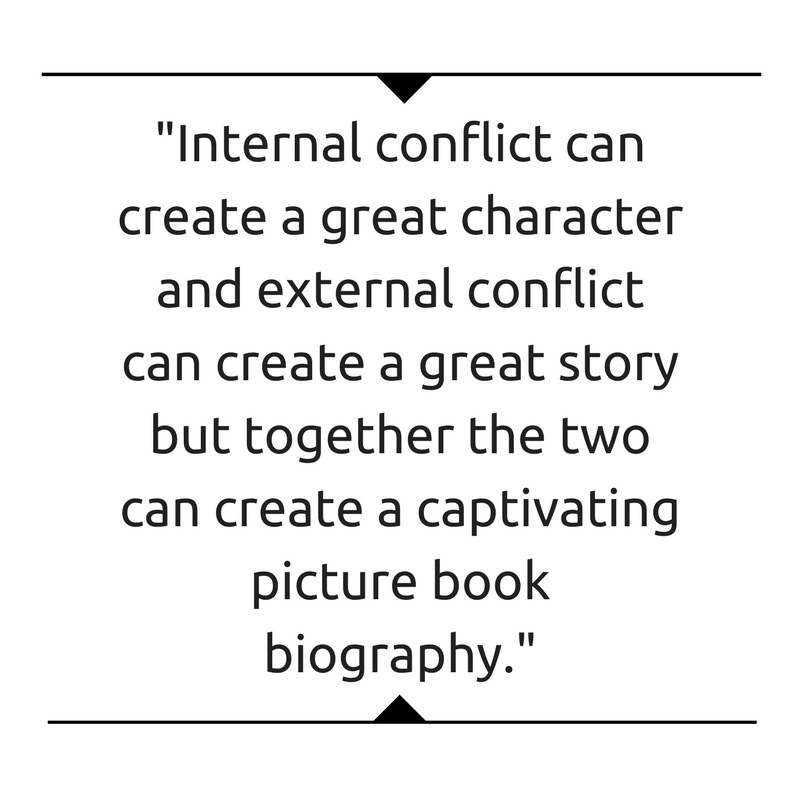 At Lee & Low Books we are always interested in biographies of unsung heroes. Stories of lesser-known individuals who used their talents and overcame obstacles to achieve their dreams and serve their society fill our shelves of published titles. Each year our New Voices Award judges consider dozens of biographical submissions on the lookout for a winning combination of compelling characters and well-researched storytelling. But how do these components come together to create a manuscript? How does a writer condense someone’s entire life into a picture book? Does the writer or editor decide what information goes in the story and back matter? What is back matter, anyway? To answer these questions, and for an inside look at the editorial process, we interviewed Andrea Loney, author of the 2014 New Voices Award-winning biography Take A Picture of Me, James VanDerZee! and Jessica Echeverria, our Senior Editor who helped turn Andrea’s manuscript into an absorbing debut!
At Lee & Low Books we are always interested in biographies of unsung heroes. Stories of lesser-known individuals who used their talents and overcame obstacles to achieve their dreams and serve their society fill our shelves of published titles. Each year our New Voices Award judges consider dozens of biographical submissions on the lookout for a winning combination of compelling characters and well-researched storytelling. But how do these components come together to create a manuscript? How does a writer condense someone’s entire life into a picture book? Does the writer or editor decide what information goes in the story and back matter? What is back matter, anyway? To answer these questions, and for an inside look at the editorial process, we interviewed Andrea Loney, author of the 2014 New Voices Award-winning biography Take A Picture of Me, James VanDerZee! and Jessica Echeverria, our Senior Editor who helped turn Andrea’s manuscript into an absorbing debut!
How did you stumble upon James VanDerZee’s story and what about his life moved you to write a biography about him?
Andrea Loney: While I’d loved James VanDerZee’s photos since I was a kid, I first read about him 15 years ago in a magazine article. I found his biography and was completely engrossed by the twists and turns of his astounding comeback story and how it informed his art, his work and, ultimately, his legacy. I must have checked that book out five or six times.
When it comes to VanDerZee’s life, I was struck most deeply by how he viewed the world through a lens of love and compassion. Despite all the ugliness, disappointment, and tragedy in his life, he constantly sought to capture and portray the beauty of his people. His optimism was infectious. I knew I had to share his story.
What about Andrea’s story of James VanDerZee made you want to pursue this project?
Jessica Echeverria: I was swept away by the voice and its wonderful cadence—it was simply infectious. Then I was captivated by James VanDerZee’s life story. I love photography and couldn’t believe this was the first time I was hearing about this iconic photographer.
How did you find the story within all the facts of VanDerZee’s life? How did you uncover the emotions behind his journey?
AL: Sometimes writing a picture book biography is like taking an entire iceberg and whittling it down to a gorgeous little ice sculpture. It’s using the facts, themes, and struggles of a real person’s life as raw material to create a specific story with a beginning, middle, and end.
My first attempts to write Take a Picture of Me, James VanDerZee! came out like a combination of a Wikipedia entry and a eulogy – just dry, chunky facts covering 96 years of a man’s life. After several attempts to write the manuscript in prose, I sat down and visualized the story in my mind as if it was a movie. Then I recorded each image I saw on a tiny Post-it note. Next, I arranged the Post-it notes to create a wordless version of the story. Then I went back to add just enough text to flow from image to image. I wanted the words of the story to feel light and poetic, because there was always a lightheartedness in James’s voice, and because so much of his life was about loving people and loving his work. I wanted the text for this book to feel like one big love poem to his legacy.
Fortunately for me James VanDerZee gave many interviews and loved to share stories about his past. Many of the details in the text and illustrations of the book came directly from James’ recollections of his youth and early days in New York. He had a delightful sense of humor, but he also made it quite clear how the major events of his life affected him emotionally.

In what ways did you help Andrea shape the story?
JE: Andrea and I went back-and-forth about how much of VanDerZee’s life to address in a picture book for young readers. Should we focus on his interest in photography from a young age and then his rise to fame? Or did we want to explore the full breadth of his life that showed the highs and lows? Because the writing was so light and rhythmic, my first instinct was to keep the main part of the story short and sweet. We could show a more complete picture of his life in the back matter. But Andrea convinced me it was important to show young readers that sometimes there are setbacks in life, even after you experience some success. VanDerZee’s story is about passion and talent, but also about perseverance.
Research must be done with any non-fiction title, but how much is too much? When writing, were you ever unsure about including certain information in the narrative?
AL: Once I decided to write this book in earnest, I checked out every book I could find with James VanDerZee’s name in it. The stack of books I ultimately took home nearly reached my waist. So why did I inundate myself with information? After I put the books away, I wanted to see which facts, images, and emotions still resonated for me. Whatever remained probably belonged in the story. But by the time I found myself researching the links between prehistoric cave painting techniques and modern photography, I was like, “Okay, maybe this is too much.”
Research can be addictive. While I was exploring the three-dimensional world of this story, I got to step back in time and lose myself in American history. I listened to ragtime music, read vintage magazines, and had a great time. But I also had a specific story to tell in a finite number of words and a deadline! Eventually, I had to ask myself if I was gathering material or just indulging myself in fun facts and pretty pictures.
There were so many fascinating tidbits about James VanDerZee’s world that could not fit into the particular story I was telling. Also, some details of his past would not be appropriate for young children. So once I identified the spine of the story for this book, I used it to filter out all the details that did not serve my narrative. Any other essential information was placed in the back matter.
Should deciding what information is extraneous or not be left to the editor? Many of our Lee & Low titles, including Take a Picture of Me, James VanDerZee!, contain back matter. How do you determine what information is best suited for the story versus the back matter?
JE: I always ask my authors to leave the back matter until the very end. I want them to focus on telling a good story, and not worry about cramming every single bit of information about the person in the main text. Whatever doesn’t get covered we can always explore in the back matter. For this story, the back matter really came together after we had a chance to speak to James VanDerZee’s widow, Donna VanDerZee. She graciously shared additional details about his life and never-before-seen images for the back matter.

Do certain historical figures and events make stronger subjects for biographies than others? Which is more important: the strength of the subject or the strength of the story?
AL: I volunteer as a classroom reader for second graders and we read many biographies. The ones that seem to command the most interest from these kids are the books with conflicts they can easily grasp and that keep them guessing what will happen next. The historical era of the story or the reputation of the subject don’t seem to matter much because young children are still learning about the world — much of history is brand new to them.
As humans, we love to watch someone battle their way to victory. So I believe that conflict is the key strength here. Internal conflict can create a great character and external conflict can create a great story but together the two can create a captivating picture book biography.
JE: Well, both. You want a subject matter that will be appealing and inspiring to young readers. And it has to be written in a way that is engaging.
What was the most difficult part of creating the biography of this unsung hero’s life? What was the most rewarding?
JE: With any biography or nonfiction work, it’s always hard to find details and facts about lesser-known historical figures. It requires an extra amount of research and vetting to make sure we get things right. Thankfully, there is a lot of information about James VanDerZee’s life and Andrea was a thorough researcher. She kept track of her resources and crosschecked information. It makes my job as an editor so much easier when an author is a meticulous researcher. We also had the great opportunity to verify parts of the story with James VanDerZee’s widow.
AL: Ultimately, the hardest part of creating this biography was convincing myself that I could do it. I carried this story in my heart for over a decade, but I still didn’t have the confidence to put myself out there and try to make it work. Then I attended a nonfiction workshop at an SCBWI summer conference and saw that there were many ways to write a picture book biography. From that moment it only took two months to create the manuscript that won the 2014 Lee & Low Books New Voices Award.
My favorite part of creating this book was working with my editor, Jessica Echeverria. Reading her manuscript notes was like watching a master gardener at work. In these past few years working with her, I have learned so much about the art and craft of writing and revision. I could not have wished for a better editor as a debut picture book author.
Take a Picture of Me, James VanDerZee is now available! Purchase a copy here.


4 thoughts on “Building a Biography: An Interview with New Voices Award Winner Andrea Loney and Senior Editor Jessica Echeverria”
Comments are closed.